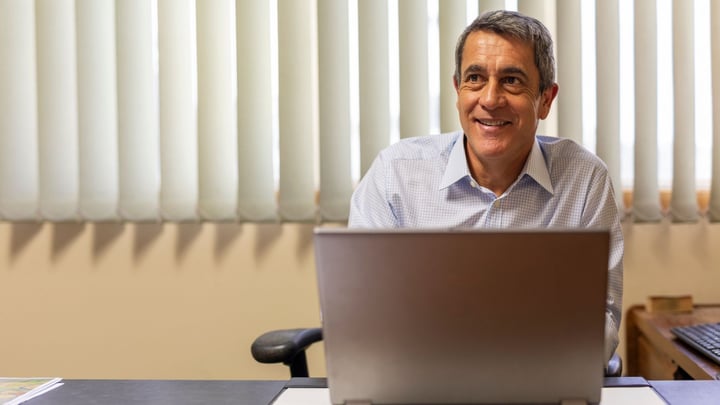Resilience for CEOs

Dr Sven Hansen, founder of The Resilience Institute, provides some valuable insights and ideas on implementing CEO resilience. The Resilience Institute delivers research-based resilience solutions to secure safe, resilient and productive workplaces around the world.

I have three recommendations for the CEO. First, walk the talk. Second, build an inclusive framework to build and attract resilient people. Third, be patient and persistent.
Resilience, wellbeing and mental health have moved to centre stage. Directors, CEOs, senior executives, current and future employees are paying attention. An interplanetary visitor could conclude that we have been destroying resilience, wellbeing and mental health for a century. The solution will take time and intelligence.
Starting with the third, quick fixes don’t work. The solution is not a workshop, a shiny app, or a bright pill.
A world-class sports team takes a decade to build. Changing behaviour through the deliberate development of physical, emotional and mental skills is hard work. Your people need a compelling case, evidence-based information and the coaching support to sustain and extend success. Building resilience is a journey of at least three years.
To succeed, the leader must be committed. The following steps may help you:
- Socialise the idea widely – getting input and engagement from your community
- Develop a framework that resonates with your culture and strategic goal
- Communicate widely and walk the talk in the top team
- Assess the physical, emotional, and mental strengths and risks in your teams
- Select a few high-impact, winnable battles like sleep, presence and fitness
- Give people room to make their own choices
- Provide consistent reminders and support while celebrating wins
The second recommendation is to develop a framework to build and attract resilient people. At present, organisations are wrestling with multiple and often overlapping or conflicting initiatives. These might include safety, mental health, wellbeing, psychological safety, mindfulness, EAP, positive psychology interventions, and more. This will confuse your people, overload executives, and leave you at the mercy of providers with conflicting goals.
You need to integrate these initiatives with a common and positive language. For example, talking about burnout reduces human beings to appliances. Adversity is the crucible of growth and connection. Expect your people to bounce forward fast. The most productive and creative people wrestle with mental and emotional issues.
Connect risk and strength. Many providers can bring fear and suffering to light by focusing on the drama of depression, anxiety and other disorders. This may increase risk in your teams. Perhaps focusing on sleep quality and consistency would have a better effect on mental health – along with many other personal and work benefits.
Rather than focus on bullying, show your people how to have respectful, caring and honest conversations. These tough conversations develop self-awareness, impulse control and empathy. Performance, wellbeing, trust and safety follow.
Finally, walk the talk. If you want to develop your team’s ability to bounce, grow, connect and flow, you need to set the example. Be visibly involved in the programme design, communication and roll-out. Demonstrate that you are aware of your strengths and risks. Take action, share your challenges and celebrate your wins. Show your people that you care about their physical, emotional and mental experience. Ask them at least once a week. While we know that we should exercise, sleep and eat veggies while not smoking, drinking or taking drugs, our research sheds light on different factors.
Looking at the most successful people in our annual samples of 10,000 or more people: Top performers prioritise these strengths consistently (2020/21 data):
- Presence
- Fulfilment
- Focus
- Bounce
- Optimism
Top performers consistently overcome the following risks:
- Worry
- Fatigue
- Self-critical
- Rumination
- Anxiety
For more on our research and The Resilience Institute, click here.
For information on how capability building programmes, workshops and advisory can help your business, click here.
For more business ownership and leadership advice, check out more of our blogs.
Icehouse Alumni? For more Icehouse content head to Icehouse Central and register now. Follow this link.


